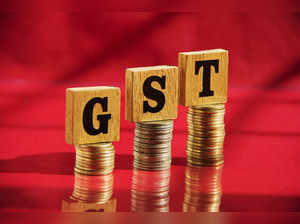 iStock
iStockThe concept of Input Service Distributor ("ISD") has passed through from the Service Tax regime to the GST regime. Despite the concept not being new, since the inception of GST, there has been a lot of confusion revolving around it.
Undoubtedly, the concept of ISD holds importance for the reason that it facilitates centralised procurement of input services for the benefit of the entire company and consequent distribution of input tax credit ('ITC') across all branches of the company subject to conditions specified. There are also other benefits associated with it such as centralised control and administration of ITC, reduction of overall tax burden by distribution of ITC among branches, etc.
ISD scheme enables distribution of ITC received at one location across other branches of a company. It ensures that ITC is allocated in adherence to the prescribed documentation and other legal requirements. Companies can avoid penalties, disputes, or non-compliance issues by following the proper procedures and maintaining compliance.
With the proposed amendment vide the Finance Bill 2024, the Government has made distribution of ITC pertaining to common expenses on input services through ISD mechanism mandatory. The distribution of internal expenses attributable to a particular branch through cross charge continues as before. It's crucial to recognise that enforcing ISD registration complements, rather than replacing the practice of cross-charge of expenses between distinct persons. Specifically, when a branch, other than the Head Office, renders support services to another branch to enhance its service delivery, for instance, it is imperative that the supporting branch implements cross-charge to the beneficiary branch.
The amendment is expected to streamline the ISD procedure and is aimed at reducing litigation, although the transition into the amended ISD regime may have substantial implications for businesses. It may become inevitable for industry players having presence in multiple States to thoroughly analyse before taking decision regarding the state where ISD registration needs to be taken, taking into account administrative and compliance cost, considering specific situations, like payment of tax under RCM will still have to be paid by non-ISD registration.
However, the taxpayers are also wary of the scheme being made mandatory due to several complications experienced in past period.
One of the main issues encountered by taxpayers in obtaining benefits of ISD under GST is ITC eligibility. In terms of the GST Laws, an ISD may distribute ITC on the basis of invoices or other approved documentation which should include ISD's name, address, and GSTIN, as well as the recipient's name, address, and GSTIN. The ISD may only disburse ITC on input services utilised by the receiving unit irrespective whether ITC is eligible or ineligible.
Another issue is wrt reversal of ITC. Under GST in case the recipient unit does not utilise the input services for business operations, the ISD must reverse the ITC allocated to such unit.
However, such compliances require continuous check on the recipient units' use of input services.
Another difficulty faced by the taxpayers while claiming ISD benefit is the documentation and paperwork required. The invoices on the basis of which an ISD distributes ITC shall include the ISD's name, address, and GSTIN, as well as of the recipient unit. It should also provide information about the input services received by the ISD. Any errors in the paperwork often lead to rejection of ITC by tax authorities.
Further, it is important for registered taxpayers to assess the location for obtaining the ISD registration, communicate with the vendors and inform them about separate ISD registration, identify the common expenses to be distributed wrt to its distinct persons and make appropriate IT system changes to carry out timely GST compliances.
Thus, we see that although ISD provides various benefits to a company as a whole, but we cannot negate the difficulties and compliance burden on the taxpayer. In order to be compliant with the GST provisions and avoid disputes with the tax authorities wrt eligibility of ITC for the recipient units, taxpayers are required to maintain several documentations, checks in their system which rather complicates the entire process. Thus, a simplified compliance matrix will definitely aid the growth and development of a transparent and tax efficient tax system.

